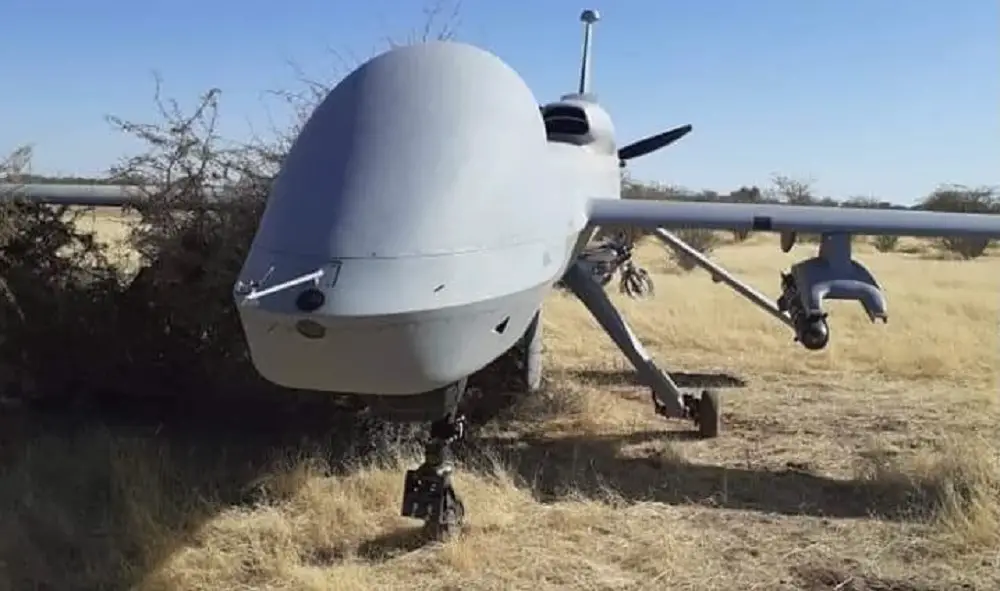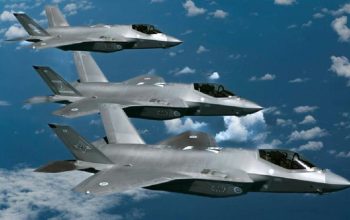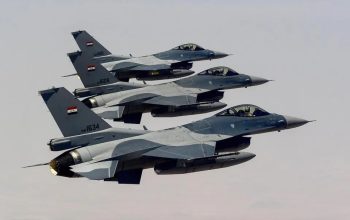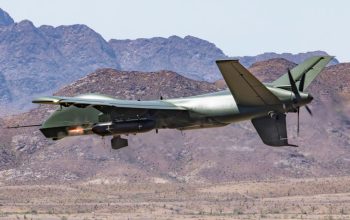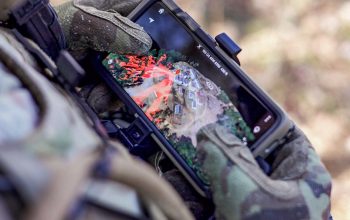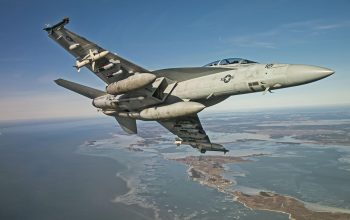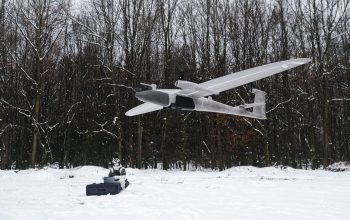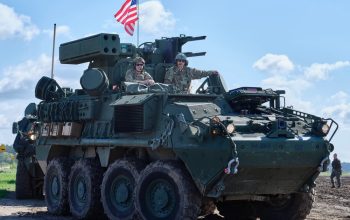The U.S. Army MQ-1C Gray Eagle unmanned aircraft conducted an emergency landing in Niger. According to a tweet from U.S. Africa Command (USAFRICOM, U.S. AFRICOM, and AFRICOM), the Gray Eagle experienced a mechanical malfunction while conducting a routine mission in support of operations in the region. The aircraft remotely piloted aircraft conducted an emergency landing in the vicinity of Agadez, Niger, Jan. 23. The photos circulating on social media shows that a U.S. Army drone was armed with at least one AGM-114 Hellfire missile. The U.S. Africa Command said, the aircraft is under observation and an investigation into the cause of the malfunction will take place.
The General Atomics MQ-1C Gray Eagle (previously the Warrior; also called Sky Warrior and ERMP or Extended-Range Multi-Purpose) is a medium-altitude, long-endurance (MALE) unmanned aircraft system (UAS). It was developed by General Atomics Aeronautical Systems (GA-ASI) for the U.S. Army as an upgrade of the General Atomics MQ-1 Predator. A Medium-Altitude Long-Endurance (MALE), the Gray Eagle has an increased wingspan and is powered by a Thielert Centurion 1.7 Heavy Fuel Engine (HFE). This is a Diesel piston engine that burns jet fuel, giving the aircraft better performance at high altitudes. It can operate for 36 hours at altitudes up to 25,000 feet (7,600 m), with an operating range of 200 nautical miles (400 km).
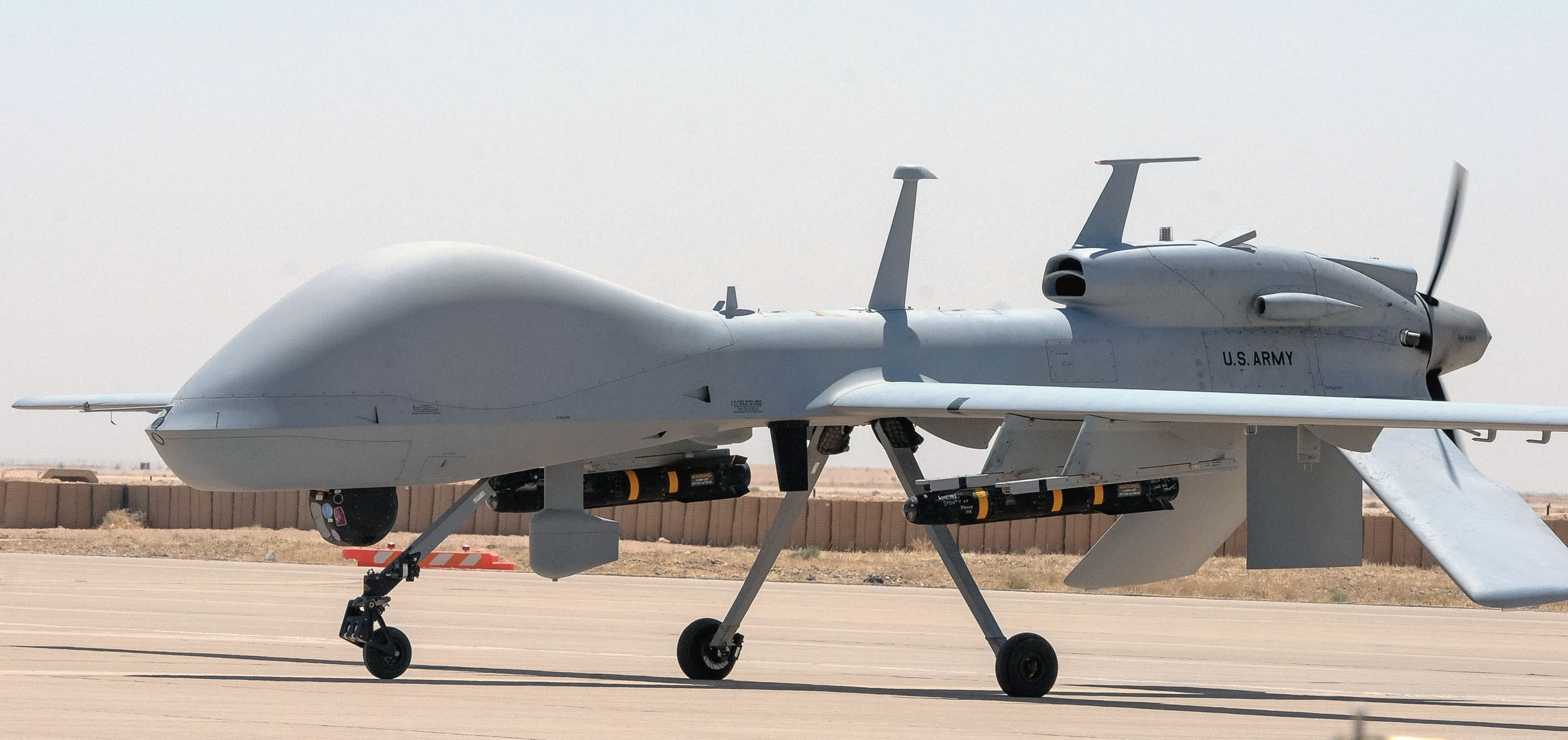
The Gray Eagle’s nose fairing was enlarged to house a synthetic aperture radar/ground moving target indicator (SAR/GMTI) system, and targeting is also provided with an AN/AAS-52 Multi-spectral Targeting System (MTS) under the nose. The aircraft can carry a payload of 800 pounds (360 kg) and may be armed with weapons such as AGM-114 Hellfire missiles and GBU-44/B Viper Strike guided bombs. Its sensors can fuse infrared imagery and use the SAR to scan and detect changes in terrain like tire tracks, footprints, and buried improvised explosive devices when performing a second scan. The Gray Eagle could operate with the jammer payload without being subject to adverse effects.
The Army’s 1st Infantry Division’s combat aviation brigade deployed to Iraq with developmental Gray Eagles in June 2010. The Army is equipping 15 companies with Gray Eagle drones to go to every active-duty division. Each company will have nine aircraft serviced by 128 soldiers, which would increase to 12 with an additional platoon when deployed. Two to three companies are being fielded annually until 2018. Full-rate production was planned for April 2013, with follow-on operational testing in 2015 using a new ground station in common with the RQ-7 Shadow.[2] From 2008 to July 2013, the Gray Eagle has accumulated over 70,000 flight hours.


